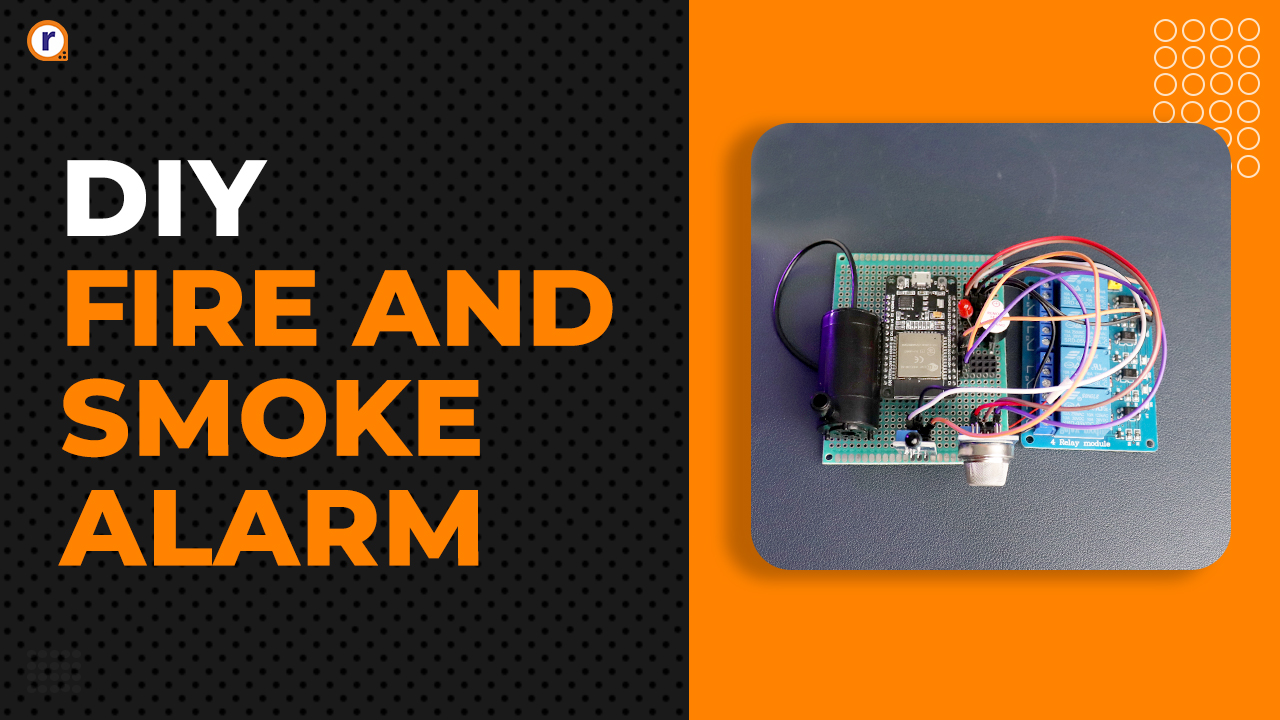8051 Microcontroller- Basics, Features,Packaging and Applications
This article discusses about 8051 microcontroller and some of its stuff which will give you a brief idea about the controller.

Namaste! Learning about microcontrollers? Have you read the basic article about what is a microcontroller? In this article, we will be discussing 8051 microcontrollers and some of the stuff which will give you a brief idea about the controller.
The 8051 Microcontroller is one of the most popular and most commonly used microcontrollers in various fields like embedded systems, consumer electronics, automobiles, etc.
Must Read on Microcontrollers :
Technically called Intel MCS-51 Architecture, the 8051 microcontroller series was developed by Intel in the year 1980 and was very popular in the ’80s (now outdated and ).
8051 Microcontroller has many features like Serial Communication, Timers, Interrupts, etc., and hence many students and beginners start their work on the concept of Microcontrollers with 8051 Microcontroller (although this trend seems to be changed with the introduction of Arduino). 8051 is history now and is now not used as it used to be.
Even though the 8051 Microcontroller might seem a little outdated but, we feel that it is one of the best platforms to get started with Microcontrollers, Embedded Systems and Programming.
Basics of 8051 Microcontroller
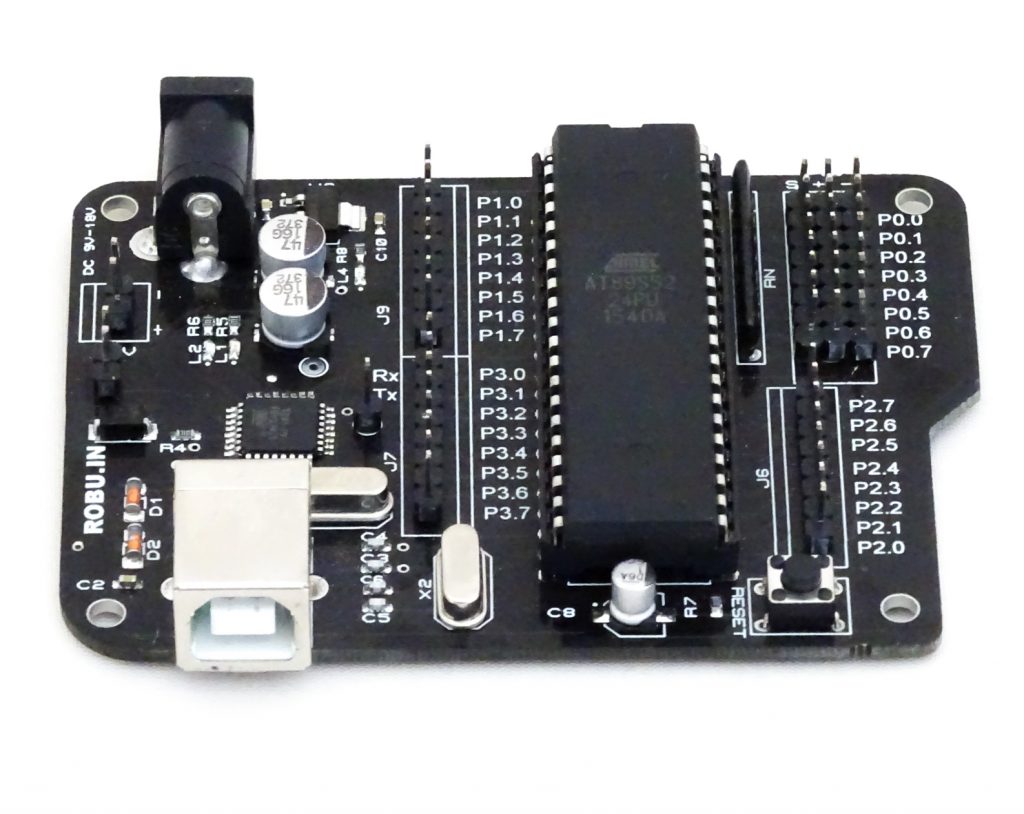
8051 is an 8 – bit Microcontroller i.e. the data bus of the 8051 Microcontroller (both internal and external) is 8 – bit wide. It is a CISC based Microcontroller with Harvard Architecture (separate program and data memory).
Since the basic layout of a microcontroller includes a CPU, ROM, RAM, etc. the 8051 microcontroller also has a similar layout. The following image shows a brief layout of a typical 8051 Microcontroller.
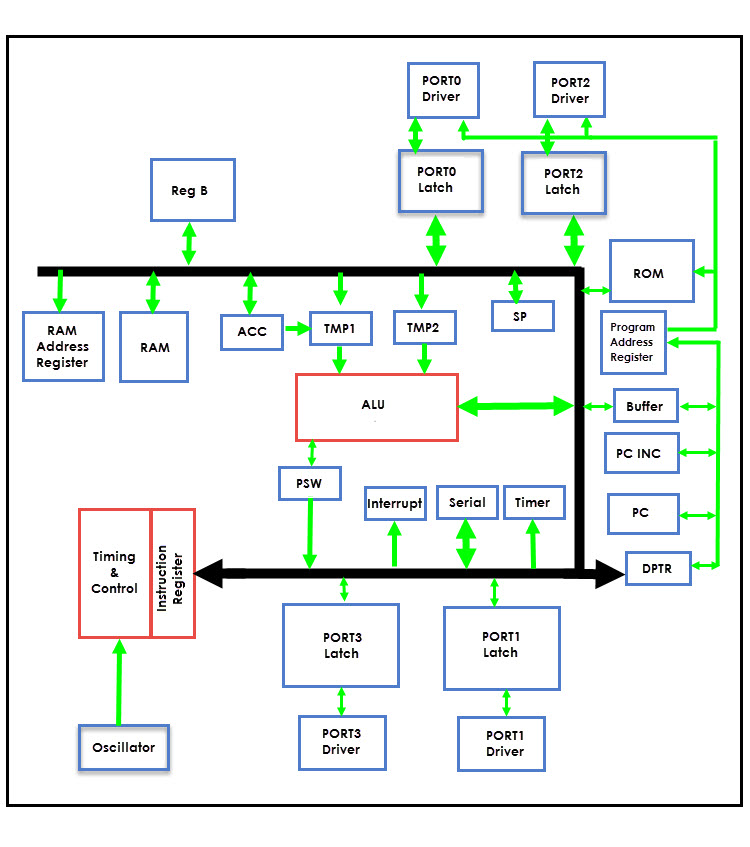
What are the Features of 8051 Microcontroller?
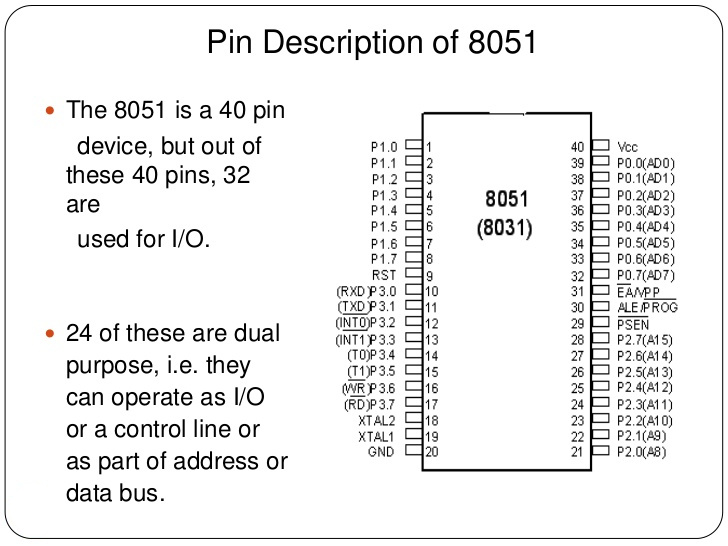
- 8 – Bit ALU: ALU or Arithmetic Logic Unit is the heart of a microcontroller. It performs arithmetic and bitwise operation on binary numbers. The ALU in 8051 is an 8 – Bit ALU i.e. it can perform operations on 8 – bit data.
- 8 – Bit Accumulator:The Accumulator is an important register associated with the ALU. The accumulator in 8051 is an 8 – bit register.
- RAM: 8051 Microcontroller has 128 Bytes of RAM which includes SFRs and Input / Output Port Registers.
- ROM: 8051 has 4 KB of on-chip ROM (Program Memory).
- I/O Ports: 8051 has four 8 – bit Input / Output Ports which are bit addressable and bidirectional.
- Timers / Counters: 8051 has two 16 – bit Timers / Counters.
- Serial Port: 8051 supports full duplex UART Communication.
- External Memory: 8051Microcontroller can access two 16 – bit address line at once: one each for RAM and ROM. The total external memory that an 8051 Microcontroller can access for RAM and ROM is 64KB (216 for each type).
- Additional Features: Interrupts, on-chip oscillator, Boolean Processor, Power Down Mode, etc.
NOTE: Some of the features like size of RAM and ROM, number of Timers, etc. are not generic. They vary by manufacturer.
8051 Microcontroller Packaging Types
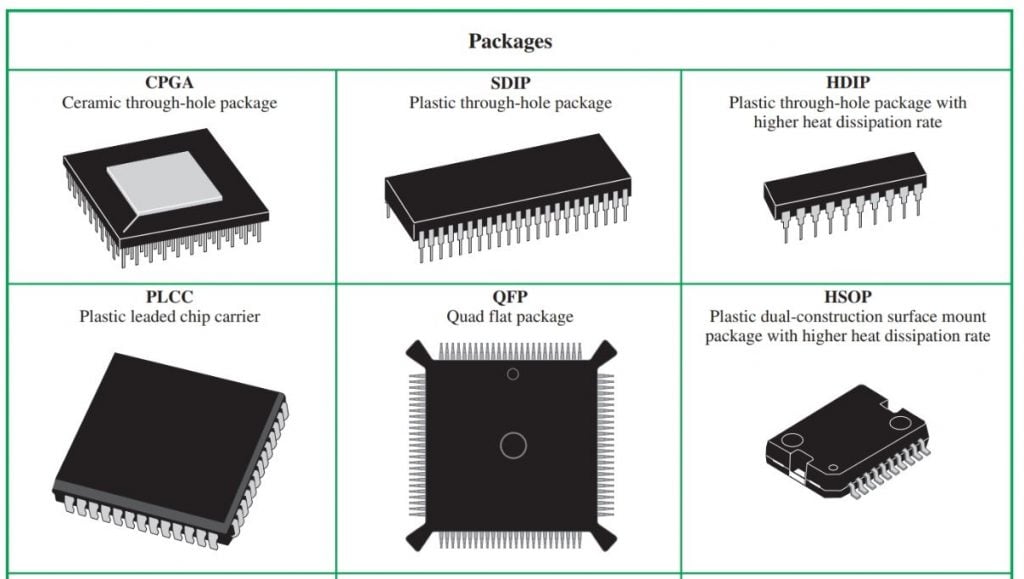
8051 Microcontroller is available in a variety of IC Packaging Types. The most popular and commonly used 8051 Microcontroller Packaging is Dual in-line or DIP. It is often available as a 40 – pin PDIP or Plastic DIP IC.
The other common packaging type is 44 – Lead PLCC (Plastic Leaded Chip Carrier). It is a kind of surface mount package.
Another surface mount packaging for 8051 microcontroller is 44 – Lead TQFP (Thin Quad Flat Package).
This article gave an introduction to 8051 Microcontroller and some its basic features. In the next article, we will see the Pinout Diagram, Pin Description and Architecture of 8051 Microcontroller.
Applications of 8051 Microcontroller
Even with the development of many advanced and superior Microcontrollers, 8051 Microcontroller is still being used in many embedded system and applications.
Some of the applications of 8051 Microcontroller are mentioned below:
- Consumer Appliances (TV Tuners, Remote controls, Computers, Sewing Machines, etc.)
- Home Applications (TVs, VCR, Video Games, Camcorder, Music Instruments, Home Security Systems, Garage Door Openers, etc.)
- Communication Systems (Mobile Phones, Intercoms, Answering Machines, Paging Devices, etc.)
- Office (Fax Machines, Printers, Copiers, Laser Printers, etc.)
- Automobiles (Air Bags, ABS, Engine Control, Transmission Control, Temperature Control, Keyless Entry, etc)
- Aeronautical and Space
- Medical Equipment
- Defense Systems
- Robotics
- Industrial Process and Flow Control
- Radio and Networking Equipment
- Remote Sensing
Let me know how was the blog? was I able to give you a detail about our ancestor in controllers, the 8051.
See you around in another article maybe! sayonara.(goodbye)



